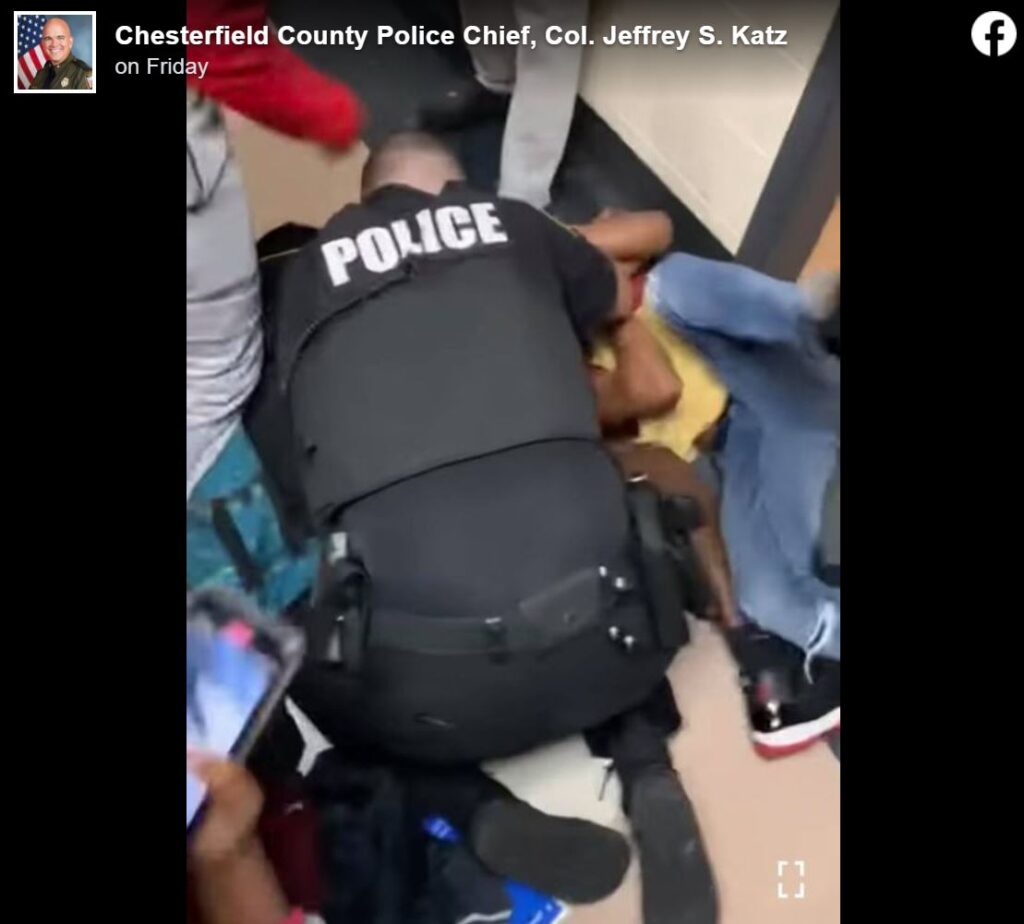
by James A. Bacon
Last week a large fight broke out at Meadowbrook High School in Chesterfield County. Police were summoned, and the school shut down for the day. According to WWBT-TV, a video circulating on social media showed school resource officers (SROs) getting hit as “more than ten” students attacked one another in the hallway.
Some Virginia school districts are eliminating SROs, declaring their presence to be oppressive. One question: How would you feel if you were the student being protected in the photo above? Chesterfield County Police Chief Jeffery Katz released the image of SRO Anthony Bowen using his body “to shield a young man from a mob attacking a student.” Bowen was struck several times in the process. Praising the officer for his selflessness, Katz said he remains committed to keeping Chesterfield school children safe.
Follow up question: Is this mayhem routine in Virginia schools, or are fights and violence worse this year? The Chesterfield brawl follows the school shooting in Newport News. One parent quoted by the TV station said, “It’s scary nowadays. I’ve lived across the street for six years. I’ve never seen anything like this before. I’ve never seen so many police here.”
That may be anecdotal. But if you collect enough anecdotes, you may have a trend.

Leave a Reply
You must be logged in to post a comment.